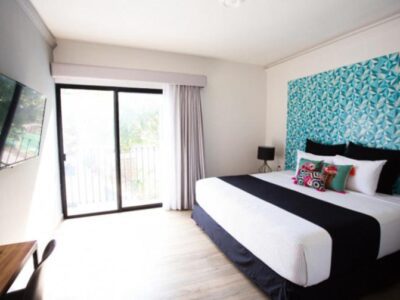Accessibility
Accessibility in a location is about how effortlessly you can reach places you need or want to go. It encompasses the ease of getting to work, schools, shopping centers, hospitals, and entertainment venues. When a place has excellent accessibility, it means less time commuting and more time for leisure or productivity. Oftentimes, real estate agents are the best source of information for accessibility and fun. For example, a FastExpert list of realtors in Oregon would highlight areas with superior accessibility, pointing out neighborhoods where everything is within reach, and enhancing the quality of life. Good accessibility also boosts property values, as homes in well-connected areas are more desirable. Furthermore, it contributes to the overall economic development of the area, attracting businesses and residents alike.
Safety and Security
Safety and security in a location are critical factors that influence not only the quality of life but also the attractiveness of the area to potential residents and businesses. A place with high safety standards means reduced crime rates and a secure environment where residents can feel safe walking the streets, children can play outside, and businesses can operate without undue risk. Effective law enforcement, well-lit streets, neighborhood watch programs, and community policing initiatives are signs of a secure area. Safety and security also play a pivotal role in real estate desirability, as they directly impact property values and the willingness of people to invest in the area. Furthermore, a reputation for safety can enhance the community’s image, attracting tourists and new residents looking for a secure place to live or vacation. In summary, safety and security are foundational to creating a thriving, prosperous community where individuals and families can live, work, and play with peace of mind.
Economic Opportunities
Economic opportunities in a location are a significant draw for individuals and businesses looking to invest, work, and grow. Areas with a wealth of economic prospects typically boast diverse job markets, offering employment across various sectors such as technology, healthcare, education, and manufacturing. These opportunities are vital for sustaining a robust local economy and ensuring the financial well-being of the community. Moreover, regions with strong economic growth attract investments, leading to infrastructural developments and innovations that further enhance the area’s appeal. Access to business resources, networking events, and investment incentives can also define a location’s economic landscape. Consequently, a place rich in economic opportunities not only facilitates personal and professional growth but also contributes to a dynamic and prosperous community, making it a preferred choice for residents and investors alike.
Cost of Living
The cost of living in a location encompasses the total amount of money needed to cover basic expenses such as housing, food, taxes, healthcare, and transportation. A lower cost of living means that individuals can afford a higher standard of living for the same income, allowing them to allocate more resources to savings, leisure, and investments. Conversely, a high cost of living can strain personal finances, necessitating higher salaries to maintain a comfortable lifestyle. The cost of living is also a crucial factor for businesses when deciding where to establish operations, as it affects wage demands and operational costs. Furthermore, regions with a manageable cost of living tend to attract a diverse population, contributing to a vibrant community and sustainable economic growth. Therefore, understanding and assessing the cost of living is essential for anyone considering a move or investment in a new location.
Cultural and Recreational Options
Cultural and recreational options in a location greatly enhance the quality of life for its residents, offering diverse activities and experiences that foster community engagement and personal well-being. Areas rich in cultural amenities, such as museums, galleries, theaters, and concert halls, provide residents and visitors with opportunities to engage with the arts, history, and local traditions, enriching their understanding and appreciation of the community. Recreational facilities like parks, sports complexes, and leisure centers contribute to physical health and social interaction, offering spaces for exercise, relaxation, and community events. These options also play a vital role in attracting tourists, which can boost the local economy through increased spending in local businesses and hospitality services. Moreover, a vibrant cultural and recreational scene can be a deciding factor for individuals and families when choosing a place to live, as it signifies a lively, engaged, and connected community. Thus, the availability and diversity of cultural and recreational activities are essential components of a location’s appeal, contributing to its overall desirability and vibrancy.
Real Estate Value
Real estate value in a location is determined by several factors, including demand, economic stability, and the quality of life in the area. High real estate values often indicate a desirable location where people want to live, work, and invest. For instance, Beaverton Real Estate Agents may highlight the area’s strong real estate market as a sign of its popularity, economic vitality, and community appeal. Factors such as good schools, low crime rates, and proximity to amenities can significantly increase the value of properties. Moreover, real estate value is not just about current prices but also potential for appreciation. Investing in an area with rising real estate values can yield substantial returns over time. Therefore, understanding the dynamics of real estate value is crucial for both buyers and investors, as it reflects broader trends in the local economy and quality of life.
Future Prospects
The future prospects of a location are key indicators of its long-term viability and attractiveness to residents and investors. These prospects are often assessed through the lens of economic growth, infrastructure development, and planned community enhancements. A location with positive future prospects is likely to see continued investment in public services, education, and transportation, which in turn attracts businesses and individuals seeking a stable and prosperous environment. The anticipation of future developments can also drive real estate demand and value, as potential buyers and investors aim to capitalize on the expected growth. Moreover, areas with strong future prospects are often at the forefront of innovation and sustainability, adopting new technologies and practices that improve the quality of life. Therefore, the future prospects of a location are crucial for making informed decisions about where to live, work, or invest, reflecting the anticipated progress and opportunities in the area.
Technological Connectivity
Technological connectivity in a location refers to the accessibility and quality of internet and telecommunications services, which are crucial for modern life and business operations. High-speed internet, reliable mobile coverage, and advanced telecommunications infrastructure are key components that define a location’s connectivity. A well-connected area supports remote work, online education, digital commerce, and access to global information and entertainment, enhancing the economic and social well-being of its residents. Moreover, technological connectivity is a significant factor for businesses in choosing a location, as it enables efficient operations, communication, and access to markets. In the digital age, areas with superior technological connectivity attract innovative companies and tech-savvy individuals, fostering a dynamic and forward-looking community. Therefore, technological connectivity is not just a convenience but a fundamental aspect of a location’s infrastructure that drives its competitiveness and appeal in the global landscape.
The post Top Factors of a “Good” Location When Buying a Home. first appeared on The Yucatan Times.














